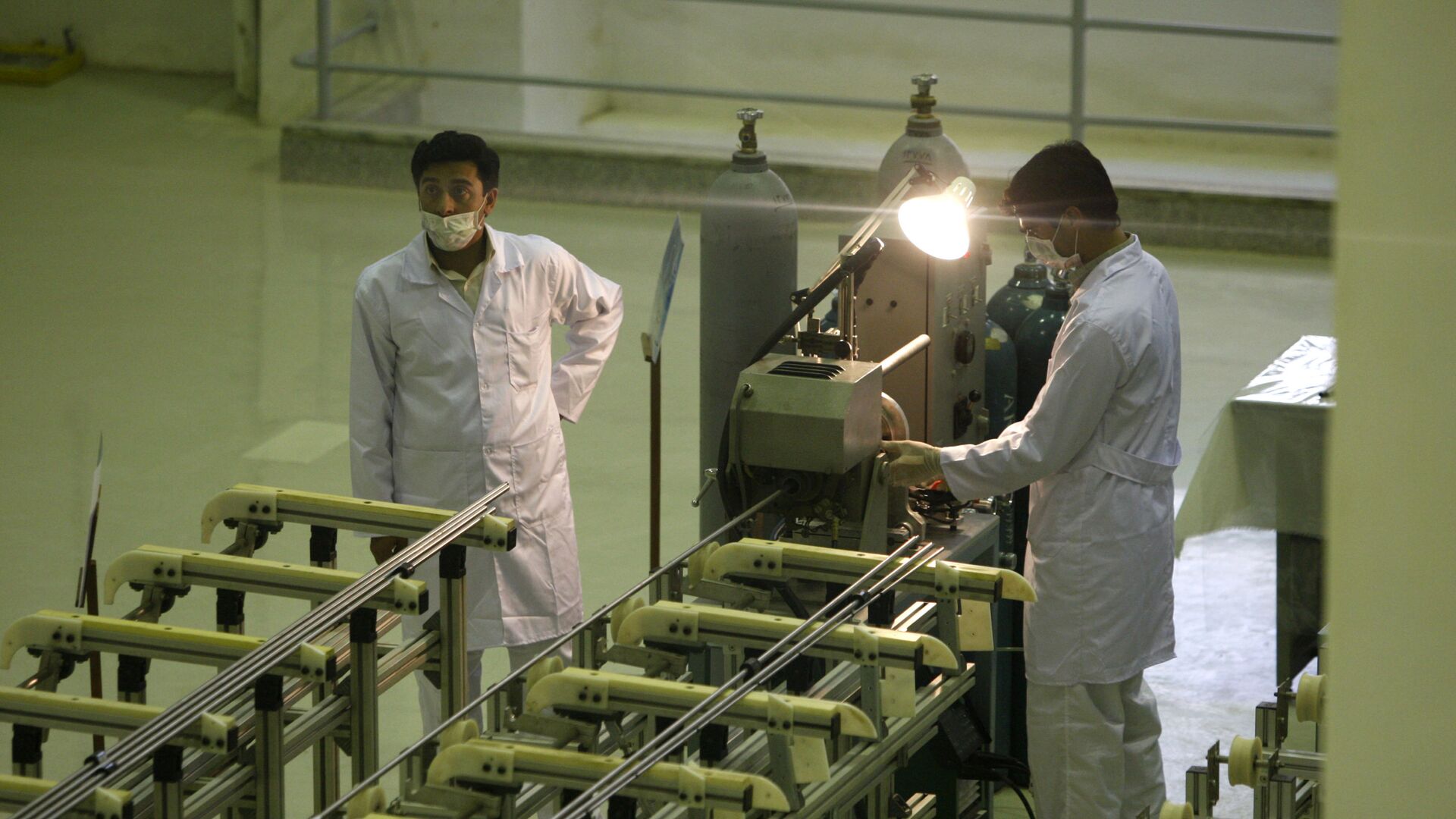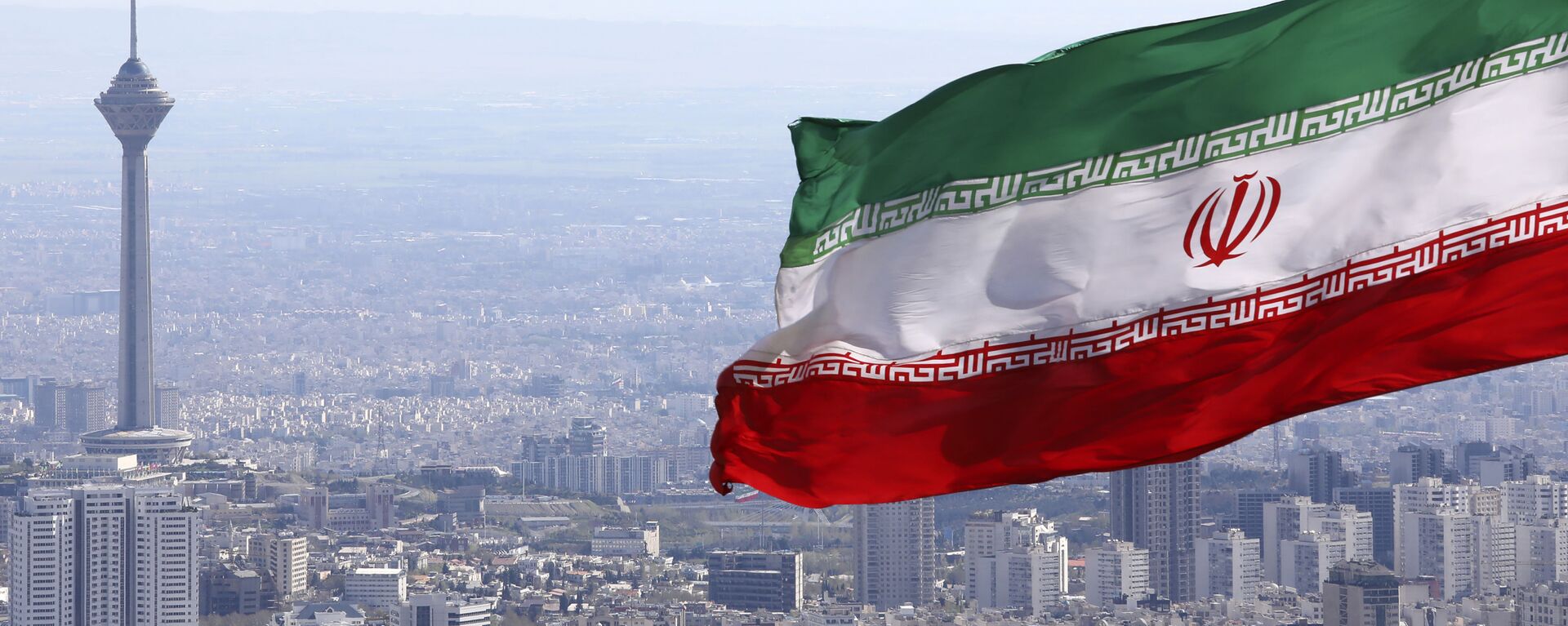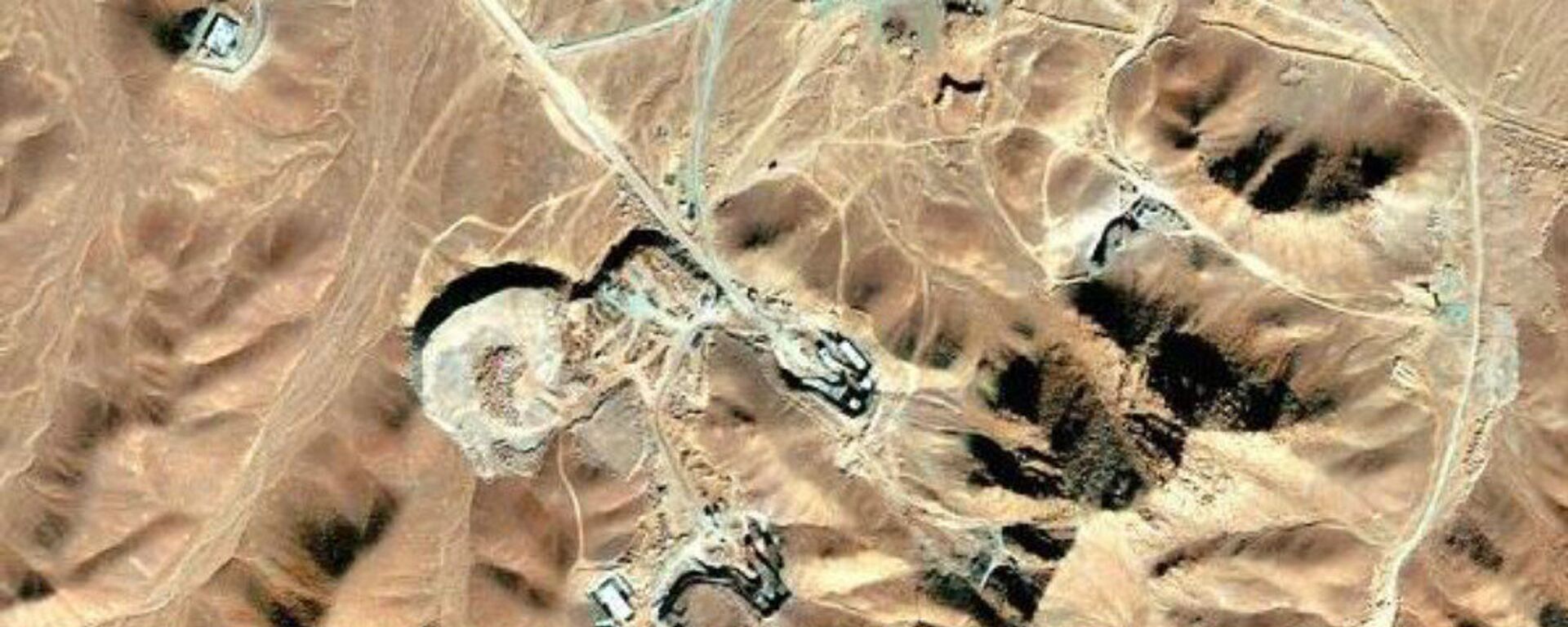https://sputnikglobe.com/20220709/iran-reportedly-increases-enrichment-processes-at-fordow-plant-with-new-centrifuges-1097138527.html
Iran Reportedly Increases Enrichment Processes at Fordow Plant With New Centrifuges
Iran Reportedly Increases Enrichment Processes at Fordow Plant With New Centrifuges
Sputnik International
Late last month, the UN nuclear watchdog reported that Iran was ready to use updated IR-6 centrifuges at its underground Fordow Fuel Enrichment Plant in the... 09.07.2022, Sputnik International
2022-07-09T21:32+0000
2022-07-09T21:32+0000
2023-07-31T16:59+0000
iran
iran deal
nuclear fuel
nuclear
uranium enrichment
fordow
iran nuclear deal
https://cdn1.img.sputnikglobe.com/img/07e5/01/05/1081658219_0:0:3073:1728_1920x0_80_0_0_bc43623febe846250d6eccc5c01b4a0d.jpg
Iran has increased its uranium enrichment through the use of sophisticated equipment at its underground Fordow reactor in a configuration that makes switching between enrichment levels easier, Reuters reported on Saturday, citing the International Atomic Energy Agency's (IAEA) new report.According to the report, the current development is not as serious as some of its earlier moves to enrich uranium to higher grades. However, Iran might switch to enriching to greater purity levels more quickly and easily if the so-called modified sub-headers were used. Uranium hexafluoride gas is reportedly referred to as UF6 and is pumped into centrifuges to be enriched.The IAEA reportedly stated in a prior report on June 20 that Iran had started pouring UF6 into the cascade for passivation, a step preceding enrichment, months after Iran first told it of its intention to use the cascade. According to the new report by the agency, the UN nuclear watchdog confirmed that passivation was over on July 6.Earlier, Western officials raised concerns about the equipment outfitting the cascade of new centrifuges. According to the agreed procedure, Iran must notify the IAEA of such a move, but the change in its enrichment process might go unnoticed for a while given the current delay between Tehran's enrichment and the IAEA inspectors' verification of what is produced.Iran has already stated it enriched uranium to up to 60%, significantly more than the 20% it produced prior to its 2015 nuclear agreement with the world's major powers that limited the nation's level of enrichment to 3.67%. However, its current standing remains far below the 90% weapons grade. Iran has repeatedly stated it has refrained from escalating its enrichment process, a move that has in itself fueled optimism around the globe that a new nuclear deal can be reached between global powers.The development comes at a time when attempts to resurrect the 2015 Joint Comprehensive Plan of Action are failing, and Western nations have cautioned that there is not much time, or even hope, left to come to a deal. The US unilaterally withdrew from the deal in 2018 under the then-president Donald Trump, with Washington then working toward reimposing sanctions against Iran that had previously been lifted under the nuclear deal. Tehran subsequently took steps to circumvent and go well beyond the limitations placed on its nuclear operations about a year after the deal shattered.
https://sputnikglobe.com/20220706/mutually-exclusive-nuclear-deal-wont-be-restored-if-us-sticks-to-unilateral-demands-iran-says-1097024032.html
https://sputnikglobe.com/20220621/iran-reportedly-readying-for-uranium-enrichment-plant-upgrade-amid-standoff-over-jcpoa-deal-1096505172.html
iran
Sputnik International
feedback@sputniknews.com
+74956456601
MIA „Rossiya Segodnya“
2022
News
en_EN
Sputnik International
feedback@sputniknews.com
+74956456601
MIA „Rossiya Segodnya“
Sputnik International
feedback@sputniknews.com
+74956456601
MIA „Rossiya Segodnya“
iran, iran deal, nuclear fuel, nuclear, uranium enrichment, fordow, iran nuclear deal
iran, iran deal, nuclear fuel, nuclear, uranium enrichment, fordow, iran nuclear deal
Iran Reportedly Increases Enrichment Processes at Fordow Plant With New Centrifuges
21:32 GMT 09.07.2022 (Updated: 16:59 GMT 31.07.2023) Kirill Kurevlev
Managing Editor
Late last month, the UN nuclear watchdog reported that Iran was ready to use updated IR-6 centrifuges at its underground Fordow Fuel Enrichment Plant in the country's central region, which can transition between enrichment stages more easily.
Iran has increased its uranium enrichment through the use of sophisticated equipment at its underground Fordow reactor in a configuration that makes switching between enrichment levels easier, Reuters
reported on Saturday, citing the International Atomic Energy Agency's (IAEA) new report.
According to the report, the current development is not as serious as some of its earlier moves to enrich uranium to higher grades. However, Iran
might switch to enriching to greater purity levels more quickly and easily if the so-called modified sub-headers were used.
“On 7 July 2022, Iran informed the Agency that, on the same day, it had begun feeding the aforementioned cascade with UF6 enriched up to 5% U-235,” the above-mentioned report to IAEA member states said.
Uranium hexafluoride gas is reportedly referred to as UF6 and is pumped into centrifuges to be enriched.
The IAEA reportedly stated in a prior report on June 20 that Iran had started pouring UF6 into the cascade for passivation, a step preceding enrichment, months after Iran first told it of its intention to use the cascade. According to the new report by the agency, the UN nuclear watchdog confirmed that passivation was over on July 6.
“On 9 July 2022, the Agency verified that Iran had begun feeding UF6 enriched up to 5% U-235 into the cascade of 166 IR-6 centrifuges with modified sub-headers for the declared purpose of producing UF6 enriched up to 20% U-235,” it read.
Earlier, Western officials raised concerns about the equipment outfitting the cascade of new centrifuges. According to the agreed procedure, Iran must notify the IAEA of such a move, but the change in its enrichment process might go unnoticed for a while given the current delay between Tehran's enrichment and the IAEA inspectors' verification of what is produced.
Iran has already stated it enriched uranium to up to 60%, significantly more than the 20% it produced prior to its 2015 nuclear agreement with the world's major powers that limited the nation's level of enrichment to 3.67%.
However, its current standing remains far below the 90% weapons grade. Iran has repeatedly stated it has refrained from escalating its enrichment process, a move that has in itself fueled optimism around the globe that a new nuclear deal can be reached between global powers.
The development comes at a time when attempts to resurrect the 2015 Joint Comprehensive Plan of Action are failing, and Western nations have cautioned that there is not much time, or even hope, left to come to a deal.
The US unilaterally withdrew from the deal in 2018 under the then-president Donald Trump, with Washington then working toward reimposing sanctions against Iran that had previously been lifted under the nuclear deal. Tehran subsequently took steps to circumvent and go well beyond the limitations placed on its nuclear operations about a year after the deal shattered. 


